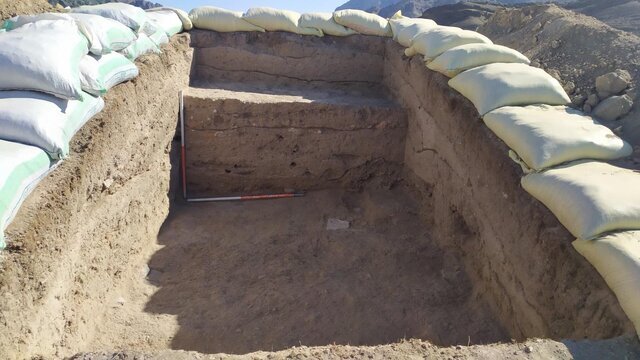Archaeologists discover centuries-old structures in East Azarbaijan

TEHRAN – Iranian archaeologists have recently discovered some architectural remains during an excavation survey in Tepe Armideli in East Azarbaijan province, northwest Iran, ISNA reported on Monday.
The structures are estimated to date back to the Seljuk era (1037–1194) and Ilkhanid era (1256 to 1335), said Reza Salmanpur, who leads the survey.
The discovery of these architectural structures indicates the existence of substantial manorial buildings in this significant settlement during the early and middle centuries of the Islamic era, he added.
However, allocating a budget for further surveys, studies, and extensive archaeological research on these remains is necessary to gain a deeper understanding, he mentioned.
Seljuk, also spelled, Seljuq, was a ruling military family of the Oguz (Ghuzz) Turkic tribes that invaded southwestern Asia in the 11th century and eventually founded an empire that included Mesopotamia, Syria, Palestine, and most of Iran. Their advance marked the beginning of Turkish power in the Middle East.
The Ilkhanid dynasty, also called Il-Khanid, was a Mongol dynasty that ruled Iran from 1256 to 1335. Il-Khan is Persian for "subordinate khan".
Hulegu, a grandson of Genghis Khan, received orders from the supreme Mongol chieftain Mongke to conquer Iran. Hulegu set out around 1253 with a Mongol army of about 130,000 men. He founded the Il-Khanid dynasty in 1256 and conquered Baghdad and all of Iran by 1258, according to Britannica.
The Il-Khanids consolidated their position in Iran and unified the region as a political and territorial entity after several centuries of fragmented rule by small dynasties. During the reign of the Il-Khanid Maumud Ghuzun (r. 1295-1304), the Il-Khanids lost all contact with the remaining Mongol chiefs in China. Mahmud Ghuzun himself embraced Sunni Islam, and his reign was a time of Iranian cultural renaissance in Iran, with scholars such as Rashid al-Din flourishing under his patronage.
Ghazan's brother Oljeitu (r. 1304-16) converted to Shia Islam in 1310. Oljeitu's conversion caused great unrest, and when he died in 1316, the civil war was imminent. His son and successor, Abu Sa'id (r. 1317-35), converted to Sunni Islam and was thus able to prevent a war.
Soaked in history and culture for millennia, Tabriz, the capital of East Azarbaijan, embraces several historical and religious sites, including the Jameh Mosque of Tabriz and Arg of Tabriz, and UNESCO-registered Tabriz Historic Bazaar Complex to name a few. The city became the capital of the Mongol Il-Khan Mahmud Gazan (1295–1304) and his successor. Timur (Tamerlane), a Turkic conqueror, took it in 1392. Some decades later, the Kara Koyunlu Turkmen made it their capital. It was when the famous Blue Mosque was built in Tabriz.
The city retained its administrative status under the Safavid dynasty until 1548, when Shah Tahmasp I relocated his capital westward to Qazvin. During the next two centuries, Tabriz changed hands several times between Persia and the Ottoman Empire. During World War I, the city was temporarily occupied by Turkish and then Soviet troops.
Tabriz was declared a world craft city of carpet weaving by the World Craft in 2016. It also bore the title of the Islamic Tourism Capital in 2018.
ABU/AM
